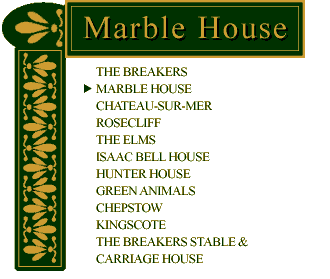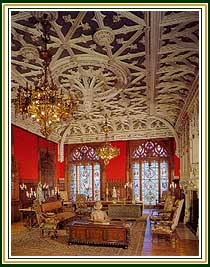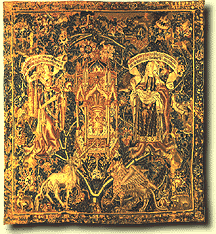


Bellevue Avenue, Newport, RI
Marble House was built between 1888 and 1892 for Mr. and Mrs. William K. Vanderbilt. It was designed as a summer house, or "cottage", as Newporters called them in remembrance of the modest houses of the early 19th century. Marble House was more than a cottage, it was a social and architectural landmark that set the pace for Newport's subsequent transformation from a quiet summer colony of wooden houses to the legendary resort of opulent stone palaces. Hence, it was one of the earliest of the great stone palaces on fashionable Bellevue Avenue, and it was the first of many opulent Vanderbilt houses in Newport.
Mr. Vanderbilt was the grandson (in some writings, the younger brother) of Commodore Cornelius Vanderbilt, who established the family's fortune in steamships and the New York Central Railroad, and who built The Breakers. Mrs. Vanderbilt was born Alva Erskine Smith of Mobile, Alabama. She was a leading hostess in New York and Newport, and later became a militant suffragist (Many of her pieces of fine china displayed "Votes for Women" on them). Mrs. Vanderbilt envisioned Marble House as her "temple to the arts" in America. The house was designed by the architect Richard Morris Hunt, who modeled the house after the Petite Trianon at Versailles, and furnished by the Parisian cabinetmakers Allard and Sons. The house cost a total reported by contemporary press accounts at $11 million, of which $7 million was spent on the 500,000 cubic feet of American, Italian and African marbles incorporated into its construction. The Vanderbilts had three children: Consuelo, who became the 9th Duchess of Marlborough; William K., Jr., a prominent figure in pioneering the sport of auto racing in America; and Harold, one of the finest yachtsmen of his era - successfully defending the America's Cup three times.
The opulent interiors of Marble House are a homage not only to Versailles but to the Gothic and other French design chapters and period styles considered important by Mrs. Vanderbilt. In 1913, on the eve of World War I and built by Joseph and Richard Howland Hunt, Mrs. Vanderbilt, by then Mrs. Oliver H. P. Belmont, added a whimsical Chinese Tea House on the grounds of the estate near the seaside cliffs overlooking the Atlantic Ocean for smaller scale entertaining and suffrage rallies. Mrs. Vanderbilt sold the house to Frederick H. Prince in 1932. The Newport County Preservation Society acquired the house in 1963 from the Prince estates.
(another view)

wool and silk, 1510-1515